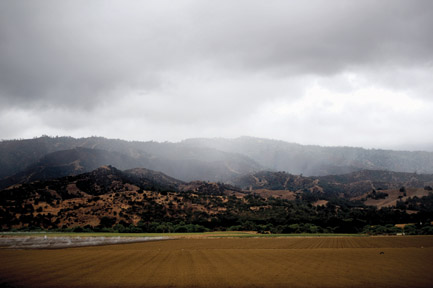Conservation, crop selection, foreclosures were contributing
factors
Changing crop patterns, conservation efforts, delays in state
deliveries and economic factors such as homes left vacant by
foreclosure led to a decline in local water demand in 2011,
according to the annual groundwater report by the San Benito County
Water District.
Conservation, crop selection, foreclosures were contributing factors
Changing crop patterns, conservation efforts, delays in state deliveries and economic factors such as homes left vacant by foreclosure led to a decline in local water demand in 2011, according to the annual groundwater report by the San Benito County Water District.
“We have an adequate amount of groundwater to get through any foreseeable drought,” said Jeff Cattaneo, the district’s executive director. “We will have to be drawing upon the ground water we have stored, but we expect that if we are able to secure a reasonable amount of San Felipe water (through the Central Valley Project) into the future, we’ll be able to maintain the levels as they are over a long period of time.”
During the drought that ran from 2007-2009, allocations of state water were lower than normal and unpredictable, a situation made worse by lawsuits that limited the amount of water pumped from the Delta to water districts to the south.
In 2010, when the local rainfall of 12.11 inches was close to the yearly average of 13 inches, CVP allocations were finalized in June, when most agricultural water customers had already made decisions for planting based on an earlier, lower allocation.
The result was nearly 5,000 acre-feet of unsold water, which the district will store in a Wasco aquifer for use during the next water shortage.
“During the drought, we didn’t have as much water to deliver to our customers, so we ended up with fallowed fields and not as much water to deliver to our (municipal and industrial) customers,” Cattaneo said.
Market demand as well as the decreased amount of higher-quality state water pumped to the county has led to the planting of more acres of tomatoes, which are more resistant to saltier groundwater than baby lettuce and greens.
Lower demand from residential users because of houses left vacant by foreclosures and a wetter-than-average spring also contributed to the greater water supply in San Benito County.
“Because there are so many vacant homes now, yards aren’t being irrigated, folks aren’t in the houses using water,” Cattaneo said.
Water officials note that while the county has ample groundwater supplies, it is essential to manage that resource so that it can be used during drought years.
“It’s important that you don’t have a long-term, declining groundwater level, which means you’re using more than can be replenished in a year,” Cattaneo said. “Ultimately, you draw down the basin so far that you have to re-drill wells because the water is below the existing well screens or you’ve used up all of your groundwater completely.”
Without the storage capabilities of local reservoirs and the water pumped from the San Luis Reservoir, the groundwater basin in San Benito County “would be out of balance and we’d be using much more than would naturally be restored each year,” he noted.
“We have to make sure we keep those projects in place. They are very important to San Benito County.”
The annual report indicates that water quality in the local basin has remained stable over the past six years, though some areas have high concentration of nitrates that need to be monitored to ensure safe drinking water conditions.
“It’s still salty; that’s never going to change,” said Cattaneo, who said Hollister’s new wastewater treatment facility will help mitigate the amount of nitrates going into San Juan Valley aquifers. The report cited a few areas in which there was a significant amount of nitrate levels found in groundwater, though Cattaneo said the district would re-check that data, which he deemed “questionable.”
Officials are also counting on the treatment plant to ultimately provide 2,000- to 4,000-acre-feet of treated water each year for agricultural use, nearly a quarter of what is needed in a given year.
As for the outlook for 2011, Cattaneo said San Luis Reservoir is expected to fill up this year, “which is good for us.”
“But that does not mean we’re going to get a full allocation” from the state, he said. “That’s only a portion of the amount of water needed south of the Delta. It depends on what the spring brings us and how court rulings on the Delta Smelt and salmon turn out. We’re still waiting to see how that’s going to affect the water supply.”










